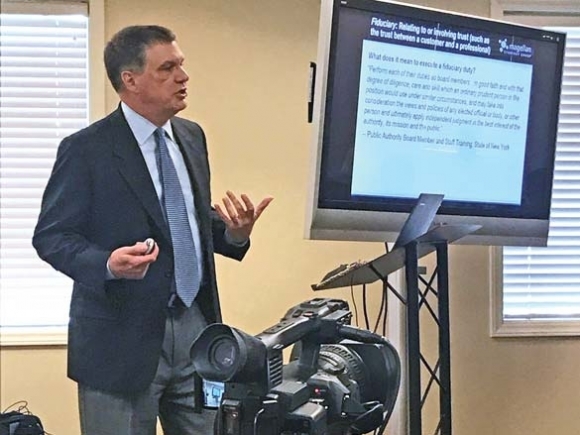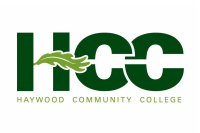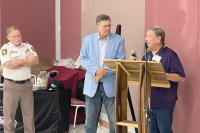Tourism board looks to change grant funding methods

The Haywood County Tourism Development Authority is considering a number of major changes to increase its efficiency in collecting and allocating tourism revenue dollars.
The recommended changes from consultant Chris Cavanaugh with Magellan Strategy Group — a company the TDA hired to review its investments — include less emphasis on funding for festivals and events and changing the makeup of subcommittees that currently have a big say in how about $350,000 a year is spent.
The TDA collects a 4 percent occupancy tax on all hotel/motel rooms, cabin rentals and other overnight accommodations in the county and is tasked with spending those funds to market Haywood County as a tourist destination.
While the TDA board uses 3 percent of the tax revenue to promote the county as a whole, the other 1 percent is distributed amongst the five zip codes in which it is collected — Maggie Valley, Waynesville, Lake Junaluska, Clyde and Canton.
Subcommittees
Presently, each zip code area has a 1 percent subcommittee that reviews funding request applications from its community and makes recommendations to the TDA board.
Related Items
Not every county tourism agency uses the subcommittee setup like Haywood, but that’s how Haywood decided to do it back in 2007 when the 1 percent funding legislation passed in the North Carolina General Assembly — it gives each community where the room tax is collected a say in what events or projects get funded.
“That’s a relatively uncommon approach — not necessarily good or bad — just unusual to redirect funds back to zip codes,” Cavanaugh told the TDA board. “Most destinations it’s done by what’s best for the county as a whole.”
He suggested simplifying the 1 percent funding process by doing away with all the subcommittees or by combining the five subcommittees into one subcommittee to review applications for all the zip codes. According to Cavanaugh, legislation creating the TDA says only that the TDA must make 1 percent funding allocations “in consultation” with the zip codes.
“Finding 16 people total to serve on those committees is difficult — there’s no established criteria other than place of residence to serve on those committees,” he said.
If the TDA continues with the subcommittees, Cavanaugh suggested requiring a member of the municipal government or the TDA to also be a member on the committee. He also recommended more training sessions for subcommittee members to reinforce the importance of their decisions and how funding allocations need to be in line with the TDA’s broader goals for the county. These sessions would also be an opportunity to teach committee members how to collect and track information to gauge whether an event was successful.
Event funding
The majority of requests for 1 percent funds are for the promotion of local events, but Cavanaugh suggested expanding the scope of applications.
“Although the 1 percent fund is mostly used to fund grants for events, there’s nothing in the (TDA) legislation saying it has to be allocated to support local events,” he said. “You have to ask what’s the return on investment to the TDA. Events have a limited window for creating economic impact, but once you’ve invested the money it’s gone.”
For example, while the Fourth of July celebration and fireworks display is a popular event that draws many local residents and visitors, Cavanaugh said, the TDA has to ask itself whether the funding is contributing to overnight stays or to brand the county as a destination.
He suggested the TDA encourage a broader range of applications to diversify how the 1 percent is spent — that could include beautification efforts, wayfinding signage, public art projects, hospitality training, tourism-related building façade improvements, co-op advertising, website development, familiarization tours for media, video and photography production, trade show booth rentals costs, park and recreation projects and brand identify development.
Cavanaugh did acknowledge that measuring overnight visitation impact based on a new website or upgraded building façade can be even more challenging than an event or festival. However, the potential impact of a website or new façade lasts much longer than a weekend festival.
The consultant also noted that his recommendation to use the current occupancy tax revenue for other needs should not deter the TDA and county officials from pursuing an additional 2 percent on the occupancy tax to be used for tourism product development. In fact, if the 2 percent is added to Haywood’s occupancy tax through the General Assembly, Cavanaugh said, Haywood wouldn’t be able to use any of the 1 percent for non-marketing tourism-related expenditures because of the legislative mandate that only one-third of the total occupancy tax can be used for that purpose.
Administrative changes
Taking into consideration the number of funding requests the TDA receives — 60 applications for 2018 — Cavanaugh made some suggestions for streamlining the application process. Currently, the TDA uses paper applications that are then scored by the separate subcommittees before they come to the TDA board for final consideration. That’s a lot of paperwork for TDA Executive Director Lynn Collins to keep up with and for a lot of folks to follow up with if the application is incomplete.
“That burden is currently borne primarily by the executive director — that is not an efficient use of the executive director’s time and expertise,” Cavanaugh said.
He recommended the TDA hire a part-time grant administrator to take those responsibilities off of Collins’ plate.
“Compare the cost of Lynn doing that versus what it would be hiring a new position,” he added.
Another suggestion was to take the application process online to avoid all the paperwork and increase accountability and a new scoring sheet for the subcommittees to complete.
Board reaction
The TDA board seemed more receptive to consolidating the five zip code subcommittees into one subcommittee instead of getting rid of the committees all together.
Several board members admitted that finding people to serve on the subcommittees has become more difficult. Also, there are no qualifications for subcommittee members other than living in the respective zip code.
The change would have to be done through a resolution by the Haywood County commissioners. TDA Board member Mike Eveland, who is also a Maggie Valley alderman and manager of the Maggie Valley Inn, asked Commissioner Mike Sorrells if the commissioners would be open to some of the recommendations.
“Some of these changes would be very significant from what we’re doing now — not saying it’s good or bad at this point,” Eveland said.
Sorrells said he thought the board would be open to any changes that would improve tourism spending.
TDA Chairman Lyndon Lowe said a lot has changed since the 1 percent legislation was approved in 2007 when Haywood County set up the subcommittees to help manage the funds.
“When it was set up each zip code was marketing themselves — now we’re marketing things in a very different way. It’s countywide to compete against Cherokee and Gatlinburg and Asheville,” he said.
TDA Board member Tammy Wight, co-owner of the Clarketon Motel in Maggie Valley, agreed that it’s important to advertise as a whole county but that she also didn’t want to see each community lose its own unique identity.
“Every seminar we’ve been to says no one cares what county you’re in — they know the towns,” she said.
Eveland agreed that Maggie Valley couldn’t lose its own identity because that’s what draws visitors every year. On the other hand, he said the Maggie Valley co-op advertising is working well to promote Maggie as a destination while also helping to meet the TDA’s overall goals.
“We’ve gone as far as we can go over the last few years with the system we have in place,” Eveland said.
Sorrells agreed that the TDA has to continue to look at what works and look for ways to improve.
“Even though we didn’t get the additional 2 percent, we listened to the proposal and saw the benefits so we supported it — if it’s a good move we’ll be supportive of it,” Sorrells said of the county commissioners’ support.
Board members were also supportive of putting the application process completely online and letting applicants know a broader range of things they can apply for instead of just events and festivals. If the applications are done through a website, applicants will have to completely fill it out in order for the document to be submitted, which cuts down on administrative work.
Collins said putting everything online could also help with the problem with some subcommittee members refusing to complete a score sheet for an application because they know the document is a public record and don’t want backlash from the applicant if they aren’t approved.
Collins said 2018 would be the time to move forward with a change since new subcommittee appointments would be coming up soon.
Lowe said the TDA finance committee would discuss the subcommittee recommendations and bring a proposal back to the board.









